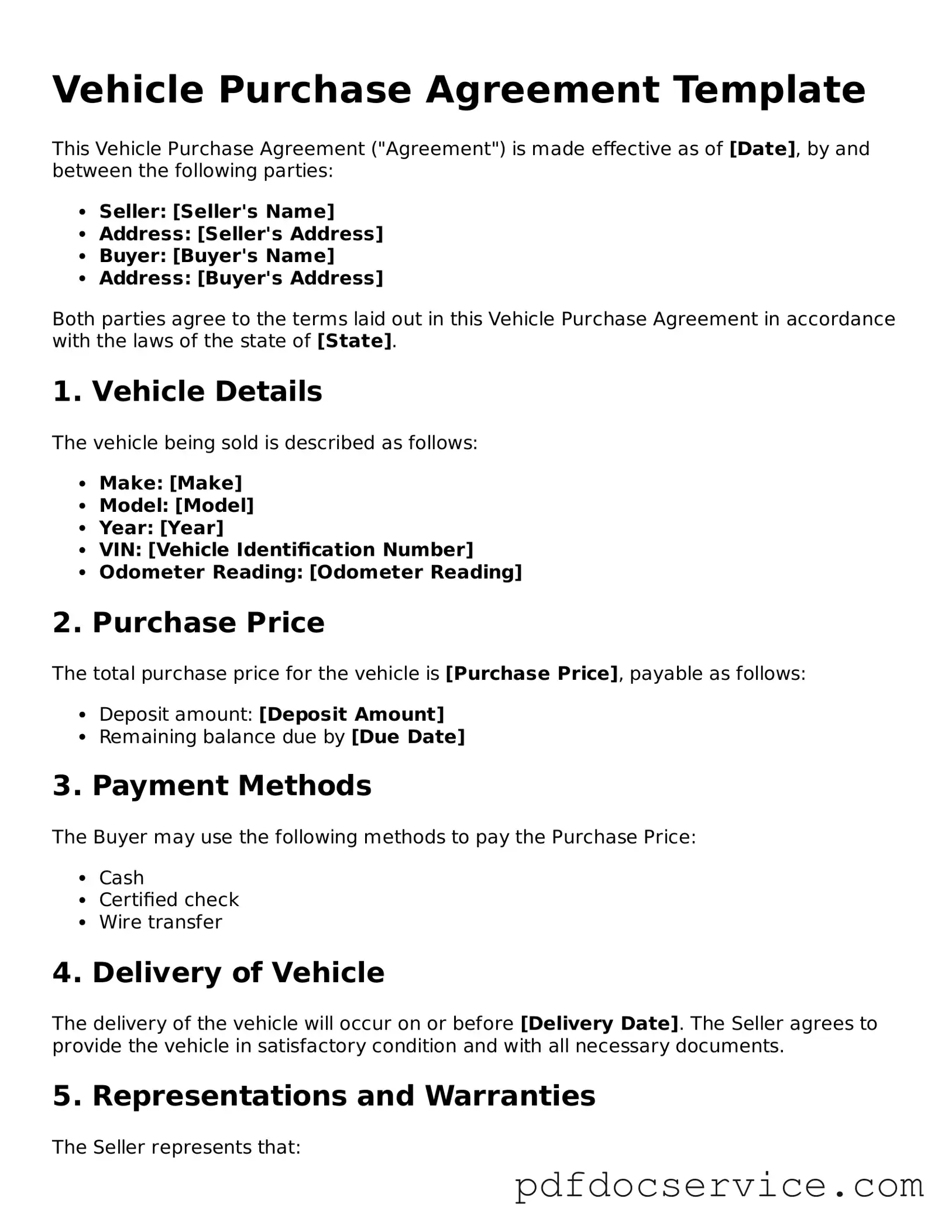The Vehicle Purchase Agreement form is a crucial document in the process of buying or selling a vehicle. This form outlines the terms and conditions agreed upon by both the buyer and the seller, ensuring that both parties have a clear understanding of their obligations. Key components of the agreement typically include the identification of the vehicle, such as the make, model, year, and Vehicle Identification Number (VIN). Additionally, the purchase price is explicitly stated, along with any deposits made or financing arrangements. The form may also address warranties, disclosures about the vehicle's condition, and any contingencies that must be met before the sale is finalized. Signatures from both parties are required to validate the agreement, making it a legally binding contract. Understanding the intricacies of this form can help buyers and sellers navigate the complexities of vehicle transactions, providing a sense of security and clarity in what can often be a significant financial commitment.
